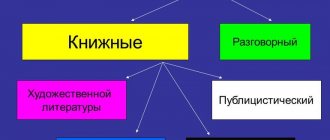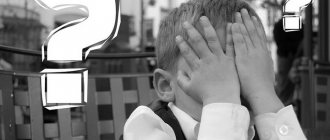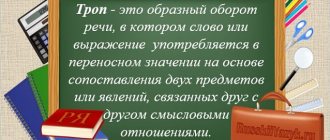The speaker and listener may not even be aware of the role of tropes in the Russian language, but actively use artistic means and perceive their dual meaning.
You don’t have to be a writer to understand the message of the phrase “pig in a poke.” But the simple man in the street will not always answer the question of what it is - “a pig in a poke”.
Defining Tropes
Tropes are the main stylistic figure designed to enrich the expressiveness of language, to embody a game with the reader through figurative thinking, enhanced expression and figurative meanings.
These include comparisons, exaggerations, epithets and other lesser-known expressions such as alliteration. It is often expressed in the form of an adjective or participle, answering the question “which?” But it can also act as a noun: spring beauty.
A narration, decorated with various techniques, arouses much more interest than a dry listing of facts, actions, names of heroes, and meager descriptions of their character.
And even in the most primitive conversations, willy-nilly, you can detect people’s desire to embellish and compare.
This is found everywhere along with syntactic and lexical means:
- In any kind of text, be it free stories, scientific articles or poems.
- In living human speech (the most common phraseological units).
- In folk art. It is mainly built on inversion, grotesque, set phrases and a colossal number of epithets.
There are quite a lot of artistic techniques, sometimes it is difficult to distinguish them from each other even for experienced literary critics. But general stylistic devices are not that complicated.
Lexical means of expression
Lexical means include expressive means based on the use of the visual capabilities of a lexical unit - a word. Synonymy, antonymy, expression and other stylistic means that make up the palette of the Russian language belong to the so-called non-special ones, that is, in addition to artistic ones, they also play a purely utilitarian role in speech. Special ones, used exclusively for artistic purposes, are paths.
Trails
Tropes are based on the figurative meaning of words. The minimum number of distinguishable varieties of tropes is three: metaphor, metonymy and synecdoche. Moreover, for literary scholars who consider synecdoche to be a special case of metonymy, the list is compressed to two positions.
The list of tropes offered by traditional literary criticism contains the table below with examples.
| Term | Meaning | Examples |
| Metaphor | Transferring a name from one object to another based on similarity. | The speaker looked at the audience with a fiery gaze. |
| Metonymy | Transfer of names based on the contiguity of concepts. | The audience greeted the teacher's words with a roar of discontent. |
| Synecdoche | Quantitative transfer “part - whole” and “one - many”. | The German is by nature pedantic and law-abiding. I borrowed for that blue blouse. |
| Epithet | Figurative, artistic definition. | The newcomer looked at the crowd with an impudent, disdainful glance. |
| Allegory | Allegory, replacement with a concrete image, a symbol of an abstract concept. | The fox in fables is an allegorical image of cunning, the donkey is stupidity, the lion is royalty. |
| Hyperbola | Artistic exaggeration. | You can't move your son from his spot even with a tank. |
| Grotesque | Exaggeration to fantastic limits. | Igor, on a bet, will walk to the Moon and return back. |
| Litotes | Understatement, the reverse of hyperbole. | The voice is thinner than a mosquito's squeak, but aims at the singer. |
| Personification | Giving inanimate objects the properties of animate ones. | The river slowly crosses the plain, carrying fishing boats on its ridge. |
| Irony | Expressing subtle ridicule by using concepts in the opposite sense. | Say something else just as smart. |
| Periphrase | Replacing the name with a description. | Thanks to the dedication of people in white coats, the patient’s life was saved. |
Figures of speech
Stylistic devices based on a word, but not using its figurative meaning, are called figures of speech. These include.
What is parcellation in Russian?
| Term | Meaning | Examples |
| Anaphora | The same beginning of sentences or lines of poetry. | The Internet is evil. The Internet completely knocks a person out of real life. We will not connect the Internet. |
| Antithesis | Contrast at the level of words, sentences, text passages. | The more often the teacher snapped and raised his voice at the children, the less often they reacted to the raised tone. |
| Gradation | Arrangement of synonymous concepts in order of strengthening or weakening of meaning. | Night came, and a heavy, heavy, unbearable melancholy fell on Anna. |
| Lexical repetition | The deliberate use of the same word several times in a text to enhance its meaning. | There are pine trees everywhere, pine trees, pine trees on the right and left, both in front and behind, and it seems there is no way out of this endless kingdom of pine trees. |
| Oxymoron | Combining incompatible concepts into one phrase. | How to survive this bitter sweetness of farewell? |
| Comparison | Clarification of a concept by comparing it with others. | Shining like a polished copper samovar, the author of the play accepted congratulations from the actors and spectators on the successful premiere. |
| Epiphora | A figure opposite to anaphor: identical words do not begin, but complete a phrase or line. | This behavior speaks of bad manners. The most ordinary bad manners. The scourge of our time is bad manners. |
A number of figures of speech include those based not only on lexical units, but also on syntactic ones, using not the meaning of the word, but the structure of the sentence.
| Term and meaning | Examples |
| Inversion, or violation of direct word order: placing the subject after the predicate, definitions after the word being defined, etc. | The north wind blew and howled. |
| Rhetorical questions, exclamations and appeals, directed in form to the reader or interlocutor, but not requiring an answer. | How long are you going to test the patience of management? |
| Syntactic parallelism, which is sentences of similar construction. | If you go straight, you will end up in a vacant lot. If you go right, you will end up on the boulevard. If you go left, you will fall into a hatch. |
| Silence is a statement that is suddenly cut off, leaving the reader or interlocutor to independently think out the unsaid. | If you see Maria, tell her... But, okay, forget it. |
| Ellipsis. Adds dynamism to the statement by releasing individual words that are easily reconstructed from the context. | Granddaughter for grandma, grandma for grandpa, grandpa for the turnip... |
Visual possibilities of vocabulary
To achieve expressiveness of the text, words belonging to different lexical groups are used.
| Term | Meaning | Examples |
| Synonyms | Words with meanings that either coincide or have nuanced differences. | spring, spring, source |
| Contextual synonyms | Words that have a similar meaning within the context in which they are used. | In V. Bianchi’s story about a bear pulling a sliver of wood sticking out of a stump and listening to the sound made by the vibrating sliver, the name musician acts as a contextual synonym for the word bear, since it was the animal that was engaged in “musical exercises.” |
| Antonyms | Those with the opposite meaning also have a contextual variety. | hot – cold, summer – winter |
| Homonyms | Completely identical in spelling and pronunciation, but with unrelated meanings | electrical socket and socket – jam saucer |
| Homographs | They coincide only in the written version, but are different in pronunciation. | atlas - atlas |
| Paronyms | Cognates that have different meanings but look and sound similar | addressee - addressee |
Metaphor - what is it, examples, types
Also, the visual possibilities of vocabulary include:
- Words used by representatives of social, professional and other groups: professionalisms, terms, jargon, dialectisms.
- Book vocabulary, which has a solemn character, and rough vernacular.
- Outdated words and neologisms.
- Borrowed words.
- Phraseologisms.
Expressive-emotional vocabulary
The use of expressive-emotional vocabulary affects the listener or reader, causing the emotions necessary for the author: empathy, rejection, condemnation, delight, etc. Speech etiquette does not approve of expressive expressions in excess, but as a speech characteristic of a literary character or a way of influencing the reader, they are justified myself. Expressive-emotional vocabulary includes:
- Colloquial vocabulary that has a reduced stylistic and increased emotional connotation compared to neutral ones (nervous, squeaky).
- Words of increased emotional coloring with a positive or negative connotation (delightful, disgusting).
- Words containing suffixes with the meaning of emotional evaluation (ant, girl, little man).
Main types
| COMPARISON | A phrase where several objects, situations, creatures, and so on are compared (compared). Comparative words are a mandatory element: “as”, “as if”, “as if”, “exactly” (meaning “as if”). “All like a rumpled bed”; "Crying like a baby." |
| EPITHET | A colorful evaluative definition with additional characteristics. "Bottomless Sky"; "Greedy Flame" |
| HYPERBOLA | Deliberate exaggeration in the description of phenomena. “A thousand suns were reflected on the waves”; "A sea of tasks." |
| LITOTES | The backfire of hyperbole: deliberate understatement. "Tom Thumb"; “I am a grain of sand in this world.” |
| METAPHOR | Transferring the characteristics of one object to another based on their similarity. This is a hidden comparison that does not use the words “as”, “as if”, and so on. “Walks like a bear”; "Forest Tent" |
| PERSONALIZATION | Intentional transfer of properties of living things to non-living things. "The clock is striking"; "It is raining". |
| IRONY | Allegory with slight mockery in order to create and convey a satirical image. “Where are you going, smart one, head? - the fox asked the donkey.” |
| INVERSION | Violation of the standard ordering of words, enhancing the expression of speech patterns. Most characteristic of folklore. “The stars thin at dawn, and the color turns pink.” |
| GROTESQUE | Portraying a subject in a comic light through contrasts and exaggeration. Most often used in folklore and character creation. Example: Koschey the Immortal. |
| OXYMORON | A type of antithesis (contrast). A paradoxical phrase with contradictory meaning. "Living Dead"; "Fire of Ice" |
All these are ways of playing with consciousness, embodying the images with which a person is accustomed to perceiving the environment, creating a special atmosphere. Images are a generalized distortion of reality , passed through the author’s inner world.
Personification
This appearance is quite easy to notice in speech. It is based on the likening of an unspiritualized object to a living being. In other words, human qualities are transferred to inanimate objects, which helps create a vivid image. This type of trope is also found quite often in works of fiction.
Impersonation examples:
- Silent sadness will be consoled... (A.S. Pushkin). Obviously, sadness cannot be consoled, because this is the sign of a living being, which is assigned to this term.
- And star speaks to star (M. Yu. Lermontov). A star is an inanimate object, therefore it cannot speak.
Poetic stylistic figures
The list doesn't end with just ten examples.
All of them can be used in poetry with the same success as in prose, but some phrases are suitable specifically for poetics.
In addition to the main types of artistic means in literature, there are poetic tropes and figures of speech.
Table with examples:
| ALLITERATION | Repeating identical consonants in order to give the verse a special intonation. "Evening. Seaside. Sighs of the wind. The majestic cry of the waves. A storm is coming. A black boat, alien to enchantment, hits the shore...” (Balmont). |
| ASSONANCE | Repeating the same vowels in a stanza or line. “Oh, the infinitely beautiful sun... The sunset is equally beautiful!” |
| ANAPHORA | Repeat the initial word, one line or phrase. “You are poor, you are abundant, you are downtrodden, you are all-powerful, Mother Rus'!” (Nekrasov). |
| PARALLELISM | The same or similar arrangement of word forms in order to create a single poetic image. “You, Admiral, will leave the sea. You, admiral, will die of grief.” |
| RHYME | Rhyme is also considered a full-fledged trope, although it is familiar even to children. The consonance of the last stressed syllable in a line is called rhyme. It can be cross, as in the example (the first and third lines, the second and the fourth alternate), or parallel (the first rhymes with the second, the third with the fourth). “The sun is rolling into the sunset, soon something new will be born, the waves will reflect the glare, the world will be illuminated with rays.” |
The role of visual and expressive means in literature and beyond
There are so many tools for creating an image, conveying the smallest shades of mood, conveying atmosphere, evoking emotions, reflecting the entire palette of colors of life and remaining in memory for a long time!
The great and powerful Russian language is rightfully considered as such precisely because it makes it possible to express one’s feelings, to make communication lively and sincere.
The means of artistic representation are used not only in literature. They also decorate our colloquial, everyday speech.
We, without hesitation, use figurative and expressive words: “cornflower blue eyes”, “blind rain”, “golden hands”, “brilliant mind”, “soul sings”, “head is buzzing”, “scared to death”, “a hundred years I know you,” “the cat cried,” “the weather is whispering,” and we understand perfectly well what we are talking about.
Application of phraseological units
Phraseologisms deserve special attention - apt set expressions characteristic of one specific language.
In our case - Russian. Along with other linguistic units, they form an important lexical part in sentences, are independent and have their own indirect meanings.
They consist of two or more words that form a uniform semantic structure.
Relevance depends on the context or life situation. There is an expressive commentary for almost any event, behavior or character.
For example:
- Play blind man's buff - to hide something, to deceive.
- Hands folded - doing nothing.
- The cat cried - very little.
- You can’t ride a goat - about an unapproachable person who doesn’t know fun.
It can be difficult to understand the essence of a veiled phrase ; besides, there have been so many persistent constructions historically that it is impossible to remember them all.
Entire volumes of dictionaries with interpretation and examples of use are devoted to phraseological units. This is not only a reflection of the rich culture of the people, but also a treasure trove of research for linguists and simply interested people.










